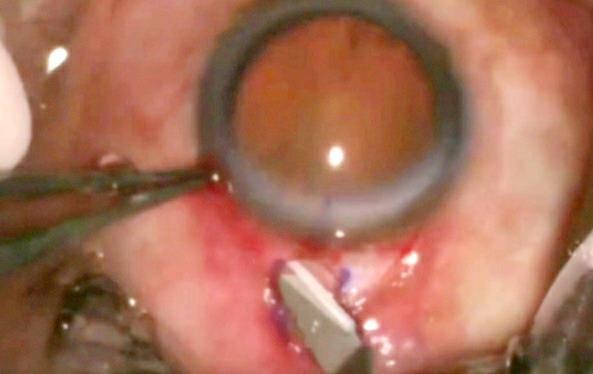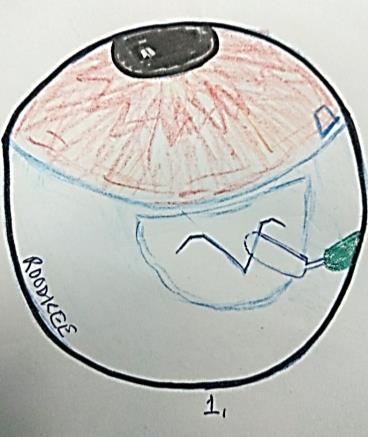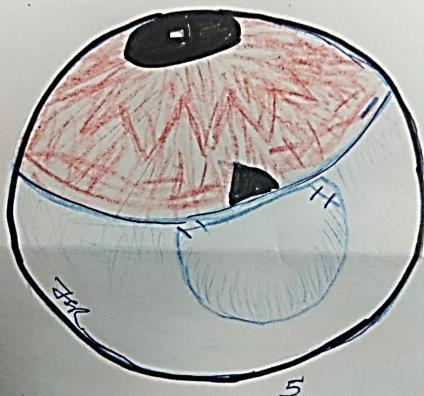One Minute
Ophthalmology



Thought Leadership and the Concept of Sharing Knowledge

India has always given away knowledge to the world, be it in the form of zero or the evolution of cataract surgery which was described in tremendous details in the Sushrut Samhita as far back as 800 BC. Nalanda was a famous university in ancient India with many schools and a grand library called Dharmaganja (Treasury of Truth) in the traditional Tibetan sources. This library was built during the reign of Samudragupta or maybe Chandragupta I. It consisted of three buildings the Ratnasagara, the Ratnaranjak, and the Ratnodadhi, which were up to 9 storeys in height. When it was burnt down by Bakhtiyar Khilji in 1193 AD, the fire kept burning for almost 3 months and almost 9 million manuscripts were destroyed. It was a loss for mankind at large and India could never reattain the scientific spirit which was damaged. In modern times, once again India is looking up to cataract surgery to become a thought leader.
EditorWhile phacoemulsification was described in 1967, manual small incision cataract surgery developed more recently by evolution through a series of steps. The outcomes of the two techniques are comparable while the incremental cost effectiveness ratio is heavily tilted in favour of the latter. Research on these techniques is required for optimized, affordable standard of care. The world is looking at India for sustainable medical development. We need to rise to the occasion and deliver using our immense scientific community.
– Anne Isabella Thackeray Ritchie (1837–1919) in 'Mrs. Dymond' (1885),
Dr Jatinder Bali
"Give a man a fish and you feed him for a day; Teach a man to fish and you feed him for a lifetime."
Manual Small Incision Cataract Surgery and Trabeculectomy

Using M/W Incision
Cataracts cause half of all cases of blindness and 33% of visual impairment worldwide.
MSICS has number of incisions depending upon incision planning, frown, smiling, chevron straight etc. About 80 percent of surgeons in India practice MSICS.
M Incision MSICS and Trabeculectomy
M or W, flying eagle, straight and frown incision are famous to do both surgeries at single go. Many papers are available in literature
Indications and contraindications:-
All indications as of trabeculectomy and associated cataract. This surgery can be done even in corneal opacities , shallow a/c , small pupil PEX syndrome.
Pre operatives:-
Routine ocular and systemic examination is done .
IOP is controlled since MSICS has to be done, IOP should be around 18 to 24 mm of Hg
Preoperative routine dilators and antibiotic are given.
Steps of the Surgery:-
•
Fornix based conjunctival flap is raised; Tenon’s capsule is cut 2 mm behind conjunctival margin.
• With the help of calipers an imaginary base of 5mm on limbus is taken and 5 mm inverted equilateral triangle impressions are taken on sclera ( each side 5mm ).3 mm V shaped incision is made 2 mm behind limbus.
• 2mm sideways horns are made which can be curved or straight (1mm horizontal and 1mm down)
• Total breadth is near 7mm
• Flap or tunnel is made by crescent.
Author Dr Jitender RudkeeFigure 1: Incision Making
• Routine manual Small Incision Cataract Surgery is done.
• IOL is implanted in bag.

• Injection Pilocarpine is instilled in anterior chamber
• Viscoelastic is instilled in anterior chamber.
• Routine trabeculectomy is performed.
• Single suture is taken at apex of scleral flap with 10-0 nylon or more depending
• Viscoelastic is washed and A/C is formed by balanced salt solution better with air
• Conjunctiva is closed with 10-0 nylon.
• Bleb is formed through side port Balanced Salt Solution.
Figure 2 and 3: Diagrammatic presentation of conjunctival flap and incision

Figure 2 and 3: Diagrammatic presentation of scleral flap and the bed.




Post Operative care:-

Post operative antibiotics, topical steroids and lubricant is used. Other advice as of any IOL surgery. Patient is followed up for bleb and IOP control
Discussion
There is big backlog of cataract and glaucoma surgeries in india. Paucity of phacoemulsification machines in Government sector and MSICS combined with trab has become a popular procedure. It is a simple procedure with tunnel and M flap with crescent knife. Flying eagle of Malik et al reported that inverted suturelessW incision demonstrated mean IOP reduction of 12.52+_ 3.59 mm Hg and sutured one 16.47 mm of Hg(p<0.001) at 6 weeks of follow-up.Another study using mitomycin C augmented trabeculectomy with MSICS through tunnel flap technique at time of surgery reported mean IOP was
30.4+_4.46 getting reduced by 16.64 +_4.75mm Hg usin this technique.
Conclusion
It isa sfe and repeatable surgery in the hands of any surgeon with some experience.
References
Belyea DA, Dan JA, Lieberman MF, Stamper RL. Midterm followup results of combined phacoemulsification, lens implantation, and mitomycin-C trabeculectomy procedure. J Glaucoma 1997; 6:90-8
Sayyad F, Helal M, el-Maghraby A, Khalil M, el-Hamzawey H. One site versus 2-site phacotrabeculectomy: a randomized study. J Cataract Refract Surg 1999;
Malik KP, Goel R. `Flying eagle` incision for combined manual small incision cataract surgery-trabeculectomy. Delhi Journal of Ophthalmology. 2016;27(2):124–7.


Khurana AK , Chawala U,Passi N, Jyoti Archana, Yogesh, A comparative study of combined MSICS with sutureless trabeculectomy verses trabeculectomy using W – incision . Neo. J ophthamol 2011:3;13


“ A dream is not what you see when you sleep. A dream is something that it does not let you sleep.” – Dr APJ Abdul Kalam
